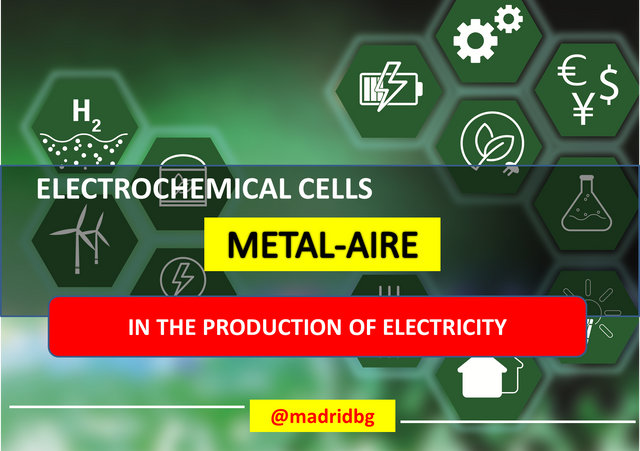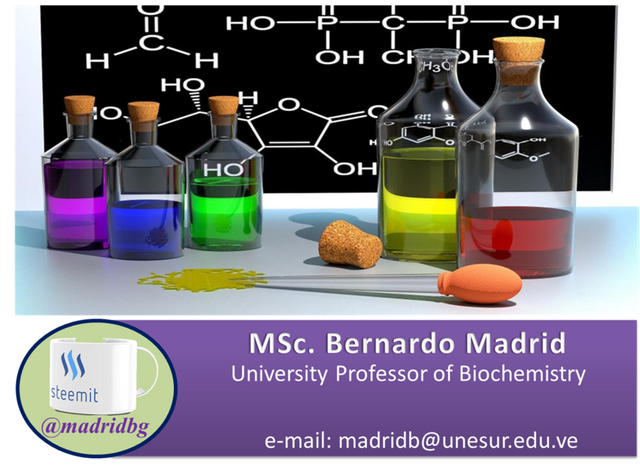METAL-AIR ELECTROCHEMICAL CELLS IN ELECTRIC POWER GENERATION

Author: @madridbg, through Power Point 2010, using public domain images. akitada31
Greetings and welcome dear readers to another installment associated with the dynamism of chemistry and its fundamentals applied to technological processes, in order to generate contributions to our lifestyle. In this sense, we will be addressing what concerns the metal-air electrochemical cells as an alternative to face the electrical demands of our society.
Therefore, it is necessary to remember that an electrochemical cell is a process where chemical reactions occur between the interactions of the substances of the cathode and anode, causing an energy transformation and generating electrical energy for different devices, ranging from automobiles to everyday processes in our homes.

Fig. 2. Representation of electrochemical cells. Author: Jfmelero
In the case of metal-air cells, the same principles are used with the difference of using a pure metal at the anode level (aluminum, lithium, copper, among others), these materials are usually immersed in an aqueous solution of electrolytes, the innovation of this technique is attributed to the substances involved at the cathode level, where it is exposed to air and atmospheric oxygen will complete the chemical reaction.
Based on the above, it is of interest to study the variations carried out through the Basque Research & Technology Alliance-BRTA research center, where the operation of metal-air cells is evaluated in terms of biological systems that allow the generation of more efficient catalysis in terms of redox processes.
To this end, the researchers have succeeded in developing synthetic molecules called biomimetics as alternatives to improve the normal processes that take place in an electrochemical cell. The objective behind the project is to generate a process similar to the inexhaustible oxygen cycle, which is linked to cellular respiration, in order to produce new cathode materials.
Beyond the economic profitability due to its low costs, the initiative will contribute at an ecological level, since no air pollutants are produced and the already established planetary balances are not affected.
Undoubtedly, these are promising advances from the dynamics of applied and interdisciplinary science, since through the process of imitation of large metabolic catalysts (enzymes and biological macromolecules), we will be able to generate highly efficient synthetic catalysts.

Fig. 3. We need a scientific process aimed at finding sustainable alternatives. Author: akitada31
FINAL CONSIDERATIONS

The field of action of chemistry is diverse and its scope is becoming more notorious every day, hence research processes such as the one described here represent a timely alternative in the face of the great planetary challenges we are living, in terms of pollution, climate change and loss of biodiversity, due to energy production based on the use of fossil fuels.
We must succeed in establishing scientific processes aimed at not affecting the balances that govern the planet, hence the importance of promoting scientific knowledge based on processes that respect the four fundamental areas of development, economy, society, technology and environment.
BIBLIOGRAPHICAL REFERENCES CONSULTED

[1] Chang, R. (2010). Química. Decima edición. McGraw-hill Interamericana editores. ISBN: 978-607-15-0307-7.
[2] Ralph, H. Petrucci, William S. Harwood, E. Geoffrey Herring. (2003). QUIMICA GENERAL. Octava edición. PEARSON EDUCACIÓN. S.A., Madrid.
[3] PÉREZ JORGE, WALTEROS YORLY. (2016). CHARGE MANAGEMENT SYSTEM FOR LITHIUM-ION BATTERIES. PONTIFICIA UNIVERSIDAD JAVERIANA, FACULTY OF ENGINEERING, DEPARTMENT OF ELECTRONICS, BOGOTÁ D.C.. Article: Online Access
OF INTEREST

•

Grateful with the community @project.hope and with all the management team of the same one that they motivate us to continue working in a mutual and balanced growth.

